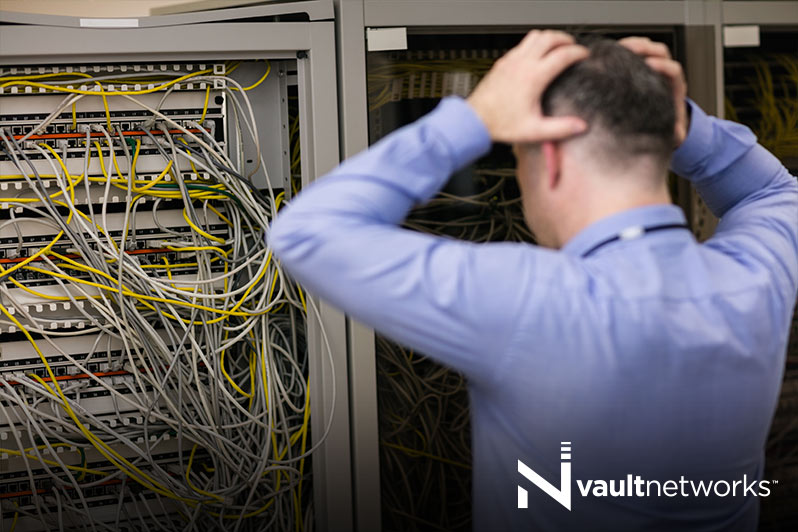No matter how well-maintained your network may be, a downtime will occur somewhere in the system sooner or later. A minor problem may simply reduce functionality, but in a worst-case scenario, your entire network could go down. Customers often see network downtime as an inescapable reality, but it’s the online business administrators and IT professionals who actually know that the reality is far more multifaceted. The fact that there are two types of network downtimes is the primary point that most users fail to understand. These types include:
- Downtime caused by human action and
- Those caused by non-human events.
Away from this line of separations lies a list of reasons for network downtime that is almost boundless. In this post, will discuss the most common reasons for it.
Network Downtime Caused by People’s Actions
The most important thing to remember here is that by human actions, we don’t refer to malicious incidents or intentional hacking. The real culprit here is decisions that are well-intentioned by poorly executed, lack of diligence, and failure to upkeep the work.
Nonetheless, these downtimes can be reduced through greater attentiveness and supervision by qualified personnel.
What you can do minimize human-caused downtime is:
- Keep the documentation up to date.
- Keep manuals regarding all devices and tools.
- Conduct regular and random tests.
- Hire a qualified IT person (full-time) or a paid professional.
Downtime Caused By Other Issues
75% of network downtime comes from other issues while the remaining 25% is what humans are responsible for. The former may be caused due to:
- Hardware failure
- Power failure
- Faulty devices
- Security attacks
How to Prevent Mission-Critical Network Outages
A managed approach to IT can help prevent downtime. These services can provide you with real-time awareness of network status and streamline the necessary response.
- Form SOPs to deal with catastrophic events.
- Carry out regular training to ensure all your team members know about the SOPs and fully understand how these could be followed.
- Identify the vulnerabilities of your network’s security against both internal and external threats.
- Use active password management, regular system patches, security monitoring, and other methods to protect the system against the potential threats identified.
- Introduce backup plans and redundancies into the system. Make sure you test these regularly to ascertain everything is fully up-to-date and operational at all times.
- In order to keep your mission-critical system safe and reliable even when a disaster occurs, arrange for around-the-clock remote network monitoring.
- Conduct a thorough analysis of every incident to identify the root cause and then perform a systematic correction to avert future relapses.
- Always review your full network and perform regular security risk valuations to shield your business against potential outages.
Keep Your Mission-Critical Network Running
You need state-of-the-art speed and precision to prevent, detect, and speedily resolve any potential critical events before they cause major disruptions.
Network downtime is not only responsible for reducing your business efficiency but also weakens your credibility and can make your data highly prone to chancy security issues. This is the reason it is imperative to cater to every downtime incident watchfully and identify the causes. This will help you minimize the downtime occurrences and develop foolproof prevention and recovery plans. A network downtime professional will be able to provide the best solutions in this regard.
The experts on our platform have the best knowledge to guard your company against commotions and downtime. Connect with us today to take in more about what we can help in keeping your network up and running.
Ready to learn more about Network Downtime?
It is vital to address every downtime occurrence and find out its causes so that those causes can be minimized are dealt with aggressively. To find out more or to start developing your downtime prevention and recovery plans, contact an experienced Vault Networks representative.
• Call: 305 735 8098. Ext. 2
• Chat with a member of our team to discuss which solution best fits your needs.

